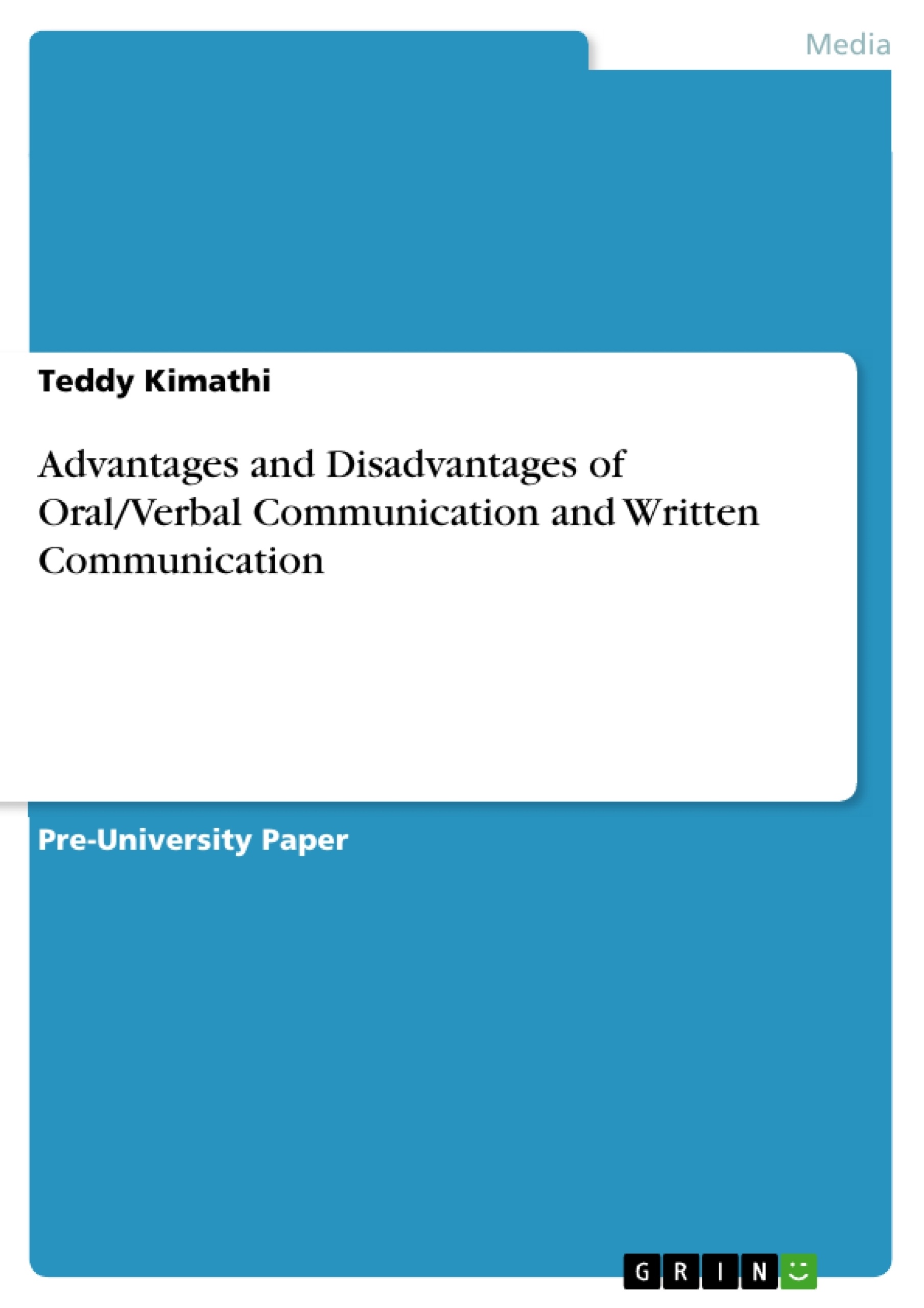This paper entails the positive and negative characteristics and nature of oral or verbal communication and written communication. The purpose of the study is to leave the readers to judge which of the two communication types are the best, or whether they are both equally important.
Table of Contents
- Advantages and Disadvantages of Oral/Verbal Communication
- Advantages and Disadvantages of Written Communication
Objectives and Key Themes
This text aims to compare and contrast oral and written communication, highlighting their respective advantages and disadvantages. The analysis considers the efficiency, effectiveness, and impact of each method in various contexts, from interpersonal interactions to large-scale information dissemination.
- Advantages and limitations of oral communication
- Advantages and limitations of written communication
- Comparative analysis of oral and written communication methods
- Impact of communication methods on information accuracy and dissemination
- The role of literacy in communication effectiveness
Chapter Summaries
Advantages and Disadvantages of Oral/Verbal Communication: This section explores the strengths and weaknesses of oral communication. On the positive side, it is highlighted as a time-efficient method allowing for immediate feedback and a stronger connection between speaker and audience. Examples provided include lectures, seminars, and the use of radio in remote areas to quickly disseminate vital information. However, the chapter also details the potential for misinformation and distortion inherent in oral communication, citing examples from religion, historical legends, and business where inaccurate information led to negative consequences. The limitations in sensitive fields like military intelligence and the challenges in formal education settings are also emphasized due to issues such as eavesdropping and the difficulties of conveying complex theoretical information without visual aids.
Advantages and Disadvantages of Written Communication: This part of the text analyzes the benefits and drawbacks of written communication. It emphasizes the advantages for intellectual pursuits, enhanced global education through wider access to written materials, and lower cost compared to modern communication technologies. The enduring nature of written records, allowing for historical research and the preservation of information across generations, is another significant point. The chapter uses examples of ancient texts and libraries to illustrate the importance of written communication in preserving knowledge and understanding historical events. Conversely, the section acknowledges the disadvantages, including the risk of information loss through damage or poor storage, the exclusion of illiterates, and the relatively slow speed of delivery compared to modern technologies like telephones and fax machines.
Keywords
Oral communication, written communication, advantages, disadvantages, information dissemination, accuracy, misinformation, literacy, education, historical records, technology, cost-effectiveness.
FAQ: A Comprehensive Language Preview - Oral vs. Written Communication
What topics are covered in this text?
This text provides a comprehensive comparison of oral and written communication methods. It analyzes their respective advantages and disadvantages, exploring their efficiency, effectiveness, and impact across various contexts. The text also examines the role of literacy in communication and the impact of communication methods on information accuracy and dissemination.
What are the main objectives of this text?
The main objective is to compare and contrast oral and written communication, highlighting their strengths and weaknesses. It aims to provide a nuanced understanding of how each method functions in different settings and its implications for information transmission and understanding.
What are the advantages and disadvantages of oral communication discussed?
Advantages include its time-efficiency, capacity for immediate feedback, and the stronger connection it fosters between speaker and audience. Disadvantages include the potential for misinformation and distortion, limitations in sensitive contexts (e.g., military intelligence), and challenges in conveying complex information without visual aids. Examples of uses include lectures, seminars, and disseminating vital information in remote areas via radio.
What are the advantages and disadvantages of written communication discussed?
Advantages include its suitability for intellectual pursuits, contribution to global education through wider access to materials, lower cost compared to some modern technologies, and the enduring nature of written records for historical research and preservation of knowledge. Disadvantages include the risk of information loss, exclusion of illiterates, and relatively slower delivery compared to modern technologies. Examples of uses include ancient texts and libraries.
How does this text compare oral and written communication?
The text offers a comparative analysis, weighing the benefits and drawbacks of each method. This comparison considers factors such as efficiency, accuracy, cost-effectiveness, and the impact on information dissemination and understanding in various contexts from interpersonal to large-scale communication.
What is the role of literacy emphasized in this text?
The text highlights the significant role of literacy in effective communication, particularly in accessing and utilizing written information. It notes the exclusion of illiterates from the benefits of written communication and its impact on education and understanding.
What are the key themes explored in this text?
Key themes include the advantages and limitations of both oral and written communication, the impact of communication methods on information accuracy and dissemination, the role of literacy, and the influence of technology on communication practices.
What keywords are associated with this text?
Keywords include: Oral communication, written communication, advantages, disadvantages, information dissemination, accuracy, misinformation, literacy, education, historical records, technology, cost-effectiveness.
What is the structure of this text?
The text includes a table of contents, a statement of objectives and key themes, chapter summaries of the advantages and disadvantages of both oral and written communication, and a list of keywords.
- Quote paper
- Teddy Kimathi (Author), 2006, Advantages and Disadvantages of Oral/Verbal Communication and Written Communication, Munich, GRIN Verlag, https://www.grin.com/document/279757




